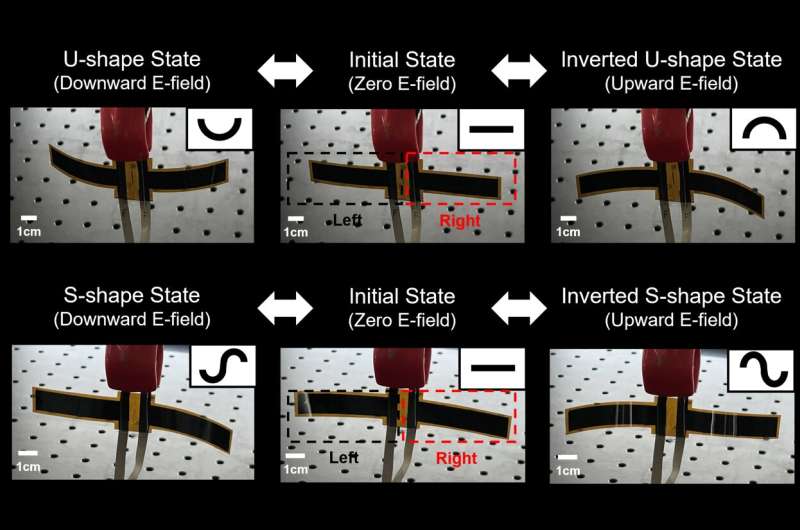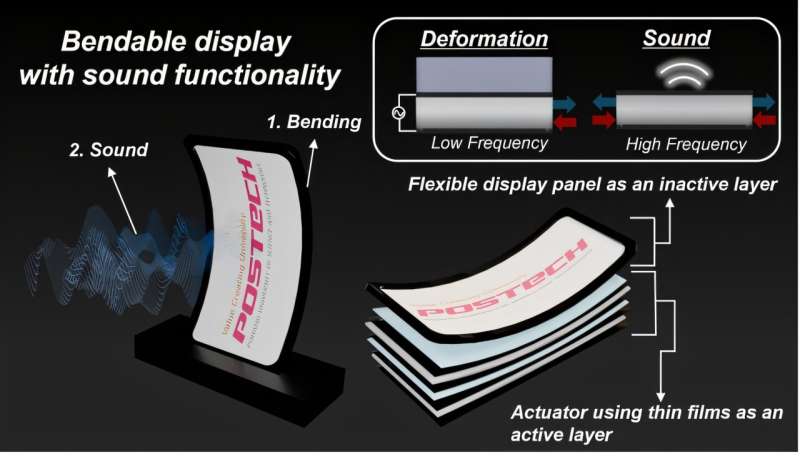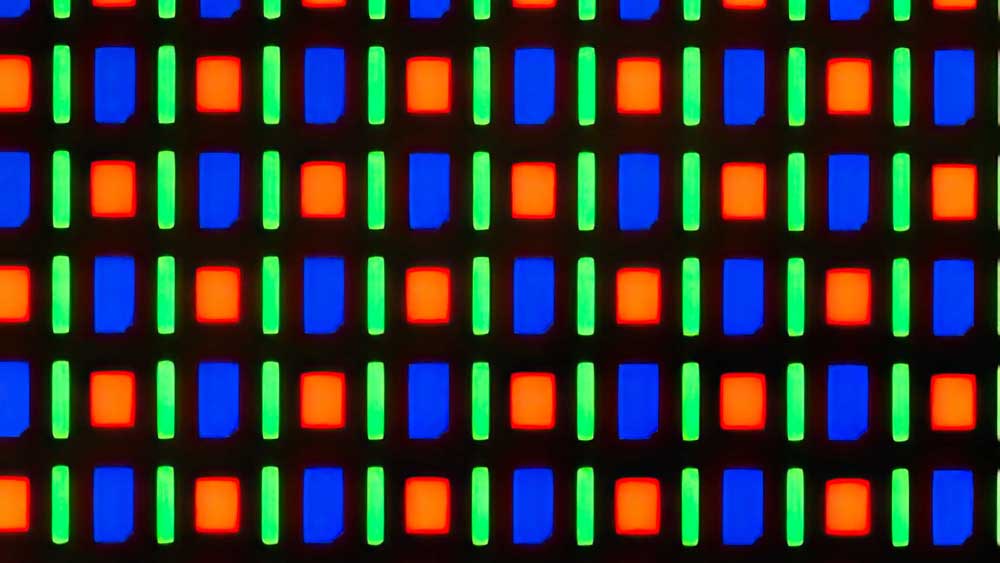A research team at Pohang University of Science and Technology (POSTECH) has unveiled the world’s first shape-morphing OLED panel that also functions as a speaker, without compromising its ultra-thin and flexible nature. This breakthrough, published in npj Flexible Electronics, could redefine the future of smartphone displays, wearables, and even automotive interfaces.
Breaking the Limits of Flexibility

The display industry has been pushing toward bendable, foldable, rollable, and stretchable designs. However, current technologies often rely on mechanical structures like hinges, sliders, or motorized arms, which add bulk, weight, and complexity. The new POSTECH OLED panel overcomes these limitations using a specialized piezoelectric polymer actuator.
This allows for shape transformation—concave, convex, S-shaped, and even wave-like forms—achieved solely through electrical signals. Unlike previous designs that use mechanical components to adjust shape, this technology maintains OLED displays’ signature thinness and lightness while allowing for true dynamic flexibility.
Sound Emission Without Speakers

Perhaps even more impressive is the panel’s ability to generate sound by vibrating the OLED surface. This eliminates the need for traditional speaker hardware, potentially reducing the thickness of smartphones and other devices while improving spatial audio experiences.
Professor Su Seok Choi, who led the research, highlights this as the first solution that merges shape transformation and built-in sound output into a single ultra-thin OLED panel. “We preserved everything OLEDs are known for—thinness, flexibility, and lightweight—and expanded their functionality into dynamic shape morphing with additional sound emission,” he stated.
Real-World Applications: Where Could We See This Tech?

While this is still in the research stage, the implications for real-world applications are enormous:
-
Next-Generation Smartphones & Wearables: Imagine a smartphone that curves to fit your hand more comfortably or changes shape for different tasks—like morphing into a gaming controller. Dynamic displays could enable more ergonomic smartwatch designs for wearables.
-
Automotive Interfaces: Future car dashboards could reshape on demand, adjusting for better visibility or immersive in-car entertainment, while integrated audio enhances spatial sound experiences.
-
Augmented & Virtual Reality Displays: Flexible, self-shaping screens could make VR headsets lighter and more immersive, while built-in audio could eliminate the need for external speakers.
-
Soft Robotics & Human-Machine Interfaces: Robots with OLED “skin” could display emotions, react to touch, or change shape based on interactions, making them more lifelike and adaptable.
-
Smart Home & IoT Devices: Imagine TVs or smart speakers that adjust their form factor dynamically for better viewing angles or transform based on user presence.
This technology signals a shift toward more adaptive and interactive displays that do more than show information—they respond, reshape, and engage users in new ways. If POSTECH’s innovation moves toward commercialization, we could be on the cusp of an entirely new consumer electronics category.
What do you think—would you prefer a shape-shifting phone or a traditional design?


